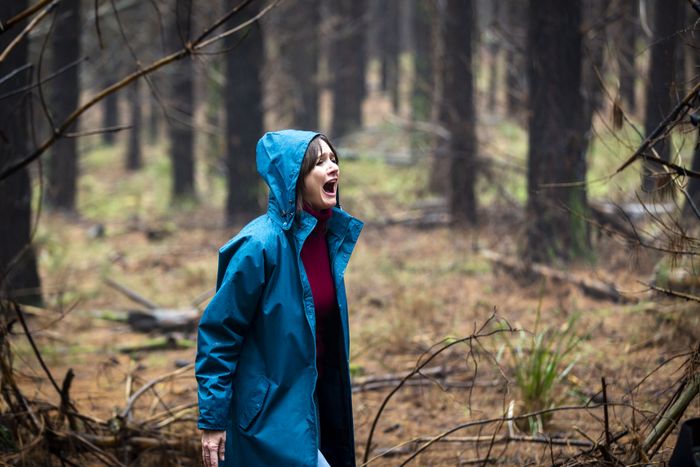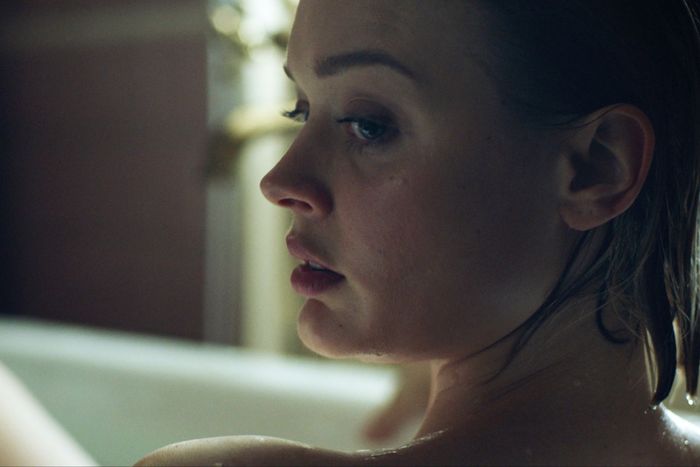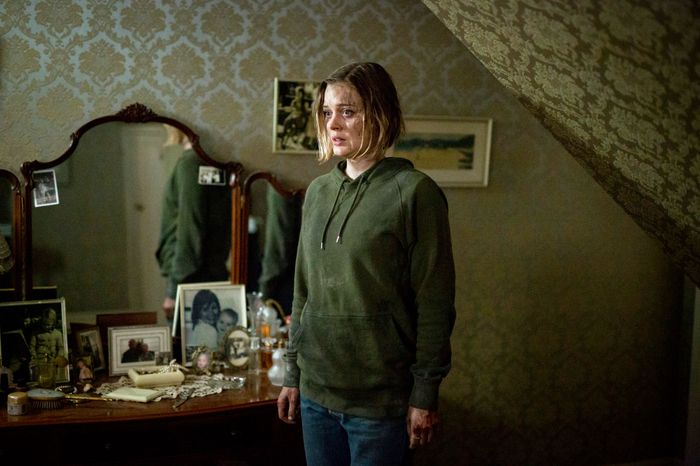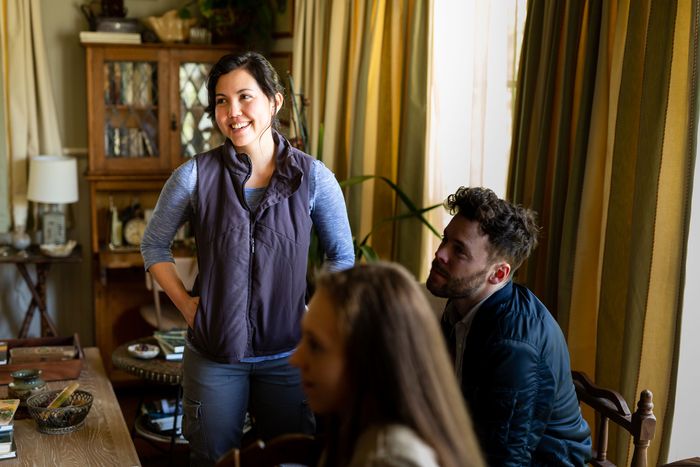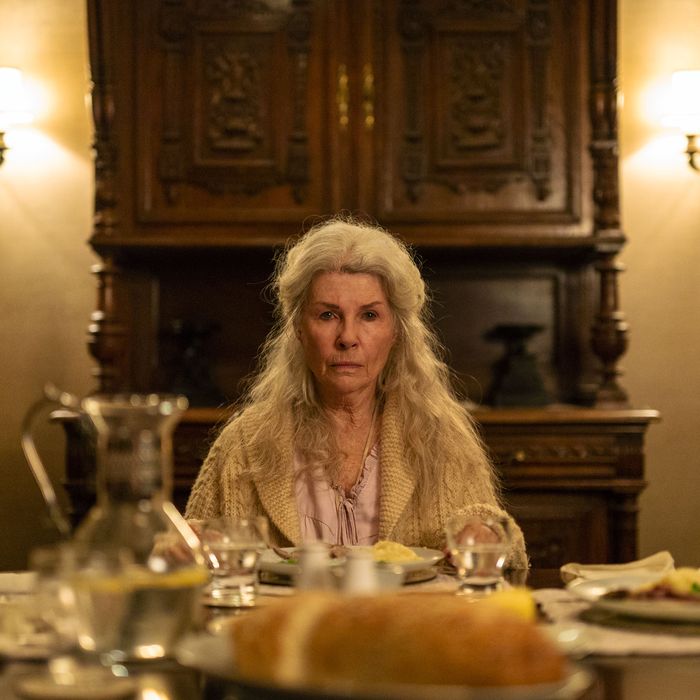
When Natalie Erika James was younger, her father got sick. The Japanese-Australian filmmaker was 19 at the time, and hadn’t really thought of herself as an adult yet, but there she was, assuming the role of the caretaker, carefully cutting her dad’s toenails as he lay in bed because he wasn’t able to do it himself. It was a mundane sort of task, and James was struck by the disorienting reversal it represented — the way it turned their previously established parent-child dynamic on its head. “I remember feeling very distinctly disturbed,” she says. “There’s a sense, once you’re parenting your parents, that everything rests with you now. That can bring your own mortality into sharp focus.”
It’s a stomach-dropping sensation, to realize that the loved ones whose presence you’ve taken for granted won’t always be there — to really understand, in more than just an abstract sense, that you may someday have to make agonizingly difficult decisions about the care of people who once cared for you. That feeling reverberates throughout Relic, James’s remarkably assured directorial debut, a horror film about three generations of women and a legacy of neglect. It opens with the kind of call that anyone living apart from aging family members comes to expect and to fear: An old neighbor, one who still lives in the country town in which Kay (Emily Mortimer) grew up, contacts the Melbourne divorcée to tell her that no one’s seen her mother Edna (Robyn Nevin) for a few days.
Edna has been on her own since the death of Kay’s father, and when Kay drives home, her aimless 20-something daughter Sam (Bella Heathcote) alongside her, the two are braced for the worst. What they find is a house that’s empty of its sole resident but filled with Post-it reminders that provide evidence of her cognitive decline — or, maybe, something more sinister. The new locks that Edna had installed on the doors could be a sign of dementia-induced paranoia, but what to make of the unsettling note that reads only “Don’t follow it”? “She called me a few weeks ago,” Kay says, gingerly, to Sam, as the two try to figure out what to do next. “She thought someone was coming into the house.”
And then Edna abruptly reappears the following day, offering no explanation as to where she went. In the aftermath of panic, Kay and Sam grapple with the revelation that the older woman is no longer safe living by herself. For Sam, the answer is simple — Kay will just take her in. “Isn’t that how it works? Your mum changes your nappies, and then you change hers?” she says. But it’s a far less easy call for Kay, whose relationship with her mother was strained even before dementia started making Edna unpredictable and prone to frightening swings in mood. As guilt, resentment, and worry eddy around the trio, the house itself seems to reflect Edna’s deteriorating state of mind, sprouting mold and unfamiliar passageways that weren’t there before.
Relic is James’s first feature, but it isn’t her first film. She has a slew of music videos and shorts under her belt, among them 2017’s Creswick, which served as a proof of concept for Relic, and 2018’s Drum Wave, which is meant to function similarly for James’s next big project, which she’s working on with Relic co-writer Christian White. Creswick played at raucous genre celebration Fantastic Fest and the venerable cinephile haven that is the New York Film Festival, which sums up the sensibility James is staking out for herself. Relic exists in the liminal space between the psychological and the uncanny. “I’ve always been drawn to stories that have at least one element of magical realism,” she says, “whether that’s played out in the world or in a character’s head. I love the idea of capturing the essence of something as opposed to being completely faithful to real life.”
The term “elevated horror” comes with a certain amount of baggage. Die-hard fans of frightening movies find something understandably disrespectful about what it implies about the rest of the genre, as though the artistry and ambitious themes that mark more recent films weren’t always important to horror. But there’s no denying its utility when it comes to describing something like Relic, which opts out of jump scares and high body counts in favor of atmosphere and a creeping dread. James cites David Lynch and Japanese horror as her primary influences, and the latter’s a noticeable touch point, referenced and winked at in the sight of Edna standing alone in the dark at night, silver hair sheeted in front of her face. It says something about both the strength of James’s script and the hotness of the particular intersection of art house and horror it represents that the film snagged support from two big-name production companies — Jake Gyllenhaal’s Nine Stories and the Russo brothers’ AGBO. The film could slot in between The Babadook and Hereditary, especially in terms of its investment in the emotional terrain of these three women at different stages in life.
The slow-simmering, character-guided approach that might make those in search of more straightforward scares impatient was also what drew in a trio of leads who weren’t all inclined to the genre. The stately Nevin, for instance, insists that she’s never seen a horror movie, unless Rosemary’s Baby counts (and why wouldn’t it). “I had some completely naïve and ill-judged impression of graves opening and ghouls and that sort of silly stuff — although I suppose that’s wonderful, too,” she allowed. Mortimer found simply reading the script to be a chilling experience: “It got at the feeling of death and saying good-bye to somebody that you love as they decay. I just was blown away.” (For Heathcote, the only teen-horror junkie in the bunch, her sense of terror at the thought of the project came from elsewhere. “Robin was someone whom I was terrified of before meeting her because she is a very formidable presence in the Australian theater scene and Australian acting in general,” she says.)
The house in which the film takes place is a character itself, crowded with years of detritus, family photos, passed-down furniture, and the accessories of Edna’s hobby of choice — candle carving, which is exactly what it sounds like. Scattered, organic-looking wax formations aside, there’s nothing traditionally eerie about the space, which is by design. James and her production designer Steven Jones-Evans wanted to create a setting that flew in the face of haunted-mansion expectations. “There’s something so great about the banality of grandmother’s house,” James says. “All the creams and the blushes in the main color scheme, turning that on its head.”
She took inspiration from the home of her own late grandmother, who developed a propensity for hoarding toward the end of her life. “I felt like there was something beautiful about the idea that Edna was trying to hold on to her clutter as a way of holding on to memories. Edna’s deterioration through Alzheimer’s is decaying the house by extension.” There’s one corner of the house in particular, a closet filled with bedding and old clothing, that eventually gives way to what James describes as “the labyrinth,” a contorted interior that expands impossibly inside the walls of the house, with uncertain geometry and dark corners. It’s a nightmare space that James and Jones-Evans built using the same architectural language as the main building, the familiar turned strange and shocking. “All the cornices and skirting boards and wallpaper are consistent with the rest of the house, reused and reimagined.”
Peel apart the spectacular terrors of so many horror movies and you inevitably find anxieties that land closer to home; the compulsions of desire or addiction get channeled into stories of vampiric bloodlust, while fears about contagion or mindless consumerism are there at the core of certain zombie-apocalypse sagas. But there’s no allegory in Relic, even when it escalates into a climactic sequence in which characters flee through warped hallways from a loose-jointed specter. Dementia is allowed to be the primary source of terror, on a realistic level and a heightened one. To have your sense of your past and your self erode, or to watch it happen in someone dear to you — that’s a horror story on its own. It’s also widespread, common enough to have touched the lives of three of the four women spoken to for this story. (Nevin, whose character actually contends with the symptoms, happens to be the outlier — she watched documentaries and visited a care facility to prepare to play Edna.)
Mortimer’s father, the writer and barrister John Mortimer, developed dementia toward the end of his life. She recalled a time when she stayed with him, this person she considered herself closest to in the world, while her younger sister went out to the store. “I’ll never forget — he looked at me like I was a total stranger he was terrified of, but he was humoring me and gave me this fake smile. It was so bizarre, to have someone who has never not looked at you with absolute love and adoration look at you like they don’t want to be left alone with you.” James’s grandmother, the one who inspired the look of the house in which Relic is set, similarly had a long decline due to Alzheimer’s. Personal pain is woven through the production. Heathcote, who experienced the loss of a parent at a young age, half-jokingly wondered, “Natalie, are you fucking with me?” after seeing which of her actual childhood photos had been used for set dressing in a climactic scene. One was of her mother, who died when she was 12.
Relic starts quietly and, almost imperceptibly, ramps itself up until it’s a cinematic shriek. While Kay pays a visit to a care facility and then cries in the parking lot afterward, and Sam considers moving in with her grandmother, something shifts, ominously, in the house. A rot spreads along the walls and doors, and on Edna’s skin as well — as though what’s happened to her internally is manifesting on the outside, and slowly spreading. It’s Edna who becomes the antagonist in the movie’s final showdown. The chase through a hallucinatory version of a domestic landscape is the closest Relic gets to evoking classic scares, giving way to a skirmish in which characters are pulled, screaming, through the walls. And then, abruptly, everything takes a turn toward the tremendously sad.
The most audacious aspect of Relic is that it concludes on a note of bracing tenderness instead of a triumph over darkness. What win can there really be when it’s your loved one who’s been rendered unrecognizable, and turned into the frightening figure in the night? “Maybe it’s the experience of Alzheimer’s itself,” James says of the sequence. “When you watch a loved one deteriorate like that, it’s heart-wrenching and horrible, and there are ugly moments when they act out, and it can feel like a horror movie. It hurts because it matters, so it sharpens your view of your love for that person as well.” The final scene creates the feeling of waking up from an intense dream — except the gruesome imagery already onscreen remains, in skin-peeling detail. It’s an ending that will evoke startled tears in the unguarded, and it really can’t be approached any other way.
Monsters can be fought, but as the film’s ultimate pivot from lurking-in-the-dark fears to fret-about-the-future ones demonstrates, Relic is about forces that can’t be defeated in battle. It’d be so much easier if there were, because without monsters to defeat, what’s left are only excruciating choices. What’s left is leaning over the bedside of someone you love, and trying to take care of them the way they used to care for you — not knowing what might happen next. Horror, in Relic, becomes a way of engaging with another type of fear, and of sidling up to trauma sideways. It’s why Heathcote, when asked by a friend who lost her father to dementia if the film would be too triggering, told her to see it. “Horror allows people to touch on grief with a sense of detachment,” she says. It’s a way of processing something simultaneously mundane and unimaginable, as she put it. “It’s like you’re grieving the loss of someone before they’re even gone, physically, from this world.”



